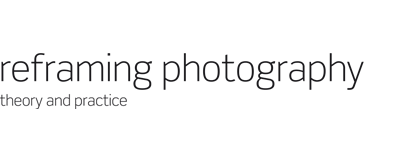Terri Warpinski
Terri Warpinski’s website
Terri Warpinski’s faculty page at the University of Oregon
http://art-uo.uoregon.edu/faculty/warpinskit
Melanie McWhorter, “An Interview with Terri Warpinski on Surface Tension”, on Finitefoto
http://finitefoto.com/terri-warpinski
Helen A. Harrison, “ART Reviews; Images of, and Mostly by, Women From a Variety of Perspectives,” The New York Times, March 14, 1999
In Surface Tension, two landscapes, the U.S-Mexico borderland and the Occupied Palestinian Territories, are conjoined. Through these photographs I probe varying aspects of power and conflict and the difficult consequences incurred when national desires for security take over at almost any cost.
The experiences and observations that take form in Surface Tension span more than a decade in time and half the world in distance. While working on another project in 1995 I began crossing the US-Mexico border regularly and continued to do so for three years. Even in its expansiveness, this region from eastern New Mexico and Chihuahua to western California and Baja became familiar ground I entered and exited with ease. Soon after I lived in and traveled about the Middle East as
a Fulbright Scholar. My arrival in Tel Aviv happened to coincide with the outbreak of the 2nd Intifada. Here the previous period of relative quiet now erupted into a violent struggle over agency and authority. I experienced significant difficulty navigating the cultural divide – especially as confined within the small footprint of Israel and Palestine - while at the same time my mind was blown open with a newfound awareness and appreciation for the complexity of the situation.
These two experiences folded together in 2009 as I returned to work and live along USMexico border. The transformation of this once familiar landscape was overwhelming. No longer a vast, continuous stretch of wide-open spaces, present now was a newly articulated place, a ‘no man’s land’. A tensile seam now scores its surface, fractures the geography and disrupts the social- and eco-systems native to area. Obvious in its symbolic presence, this is a literal power structure, and yet, avowedly
permeable and subject to that temporality which is the frailty of all human construction. And in this recognition, I was reminded that as I left the Middle East in 2001 the threat of a fence to assure the security of the Israeli people seemed an improbable feat and now it, too, is an established fact. Having confronted the wide-ranging effects of such a formidable physical barrier at home, I was moved to return to the Occupied Palestinian Territories to witness what had transpired there.
This work is my response.

Terri Warpinski, Surface Tension/US-Mexico: Las cruces y milagros, I, 2011. Archival pigment print on rag paper. Image Size: 16 X 30.5 unframed/ 17 X 31.5 framed.

Terri Warpinski, Surface Tension/US-Mexico: Juarez Crossing, 2011. Archival pigment print on rag paper. Image Size: 16 X 50 unframed/ 17X 51 framed.

Terri Warpinski, Surface Tension/Israel-Occupied Palestinian Territories: Hebron Market [9.11.10], 2011. Archival pigment print on rag paper. Image Size: 16 X 52 unframed/ 17X 53 framed.

Terri Warpinski, Surface Tension/Israel-Occupied Palestinian Territories: Boyhood [three narratives], 2012. Archival pigment print on rag paper. Image Size: 16 X 42 unframed/ 17 X 43 framed.

Terri Warpinski, Surface Tension/Israel-Occupied Palestinian Territories: Portals [Bethlehem/Aida], 2012. Archival pigment print on rag paper. Image Size: 16 X 28 unframed/ 17 X 29 framed.
